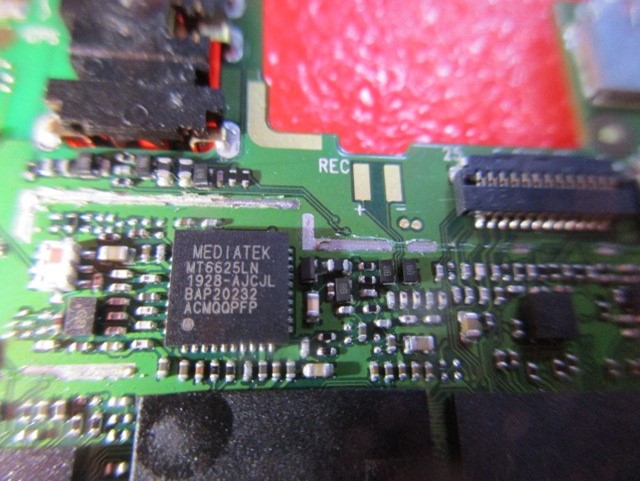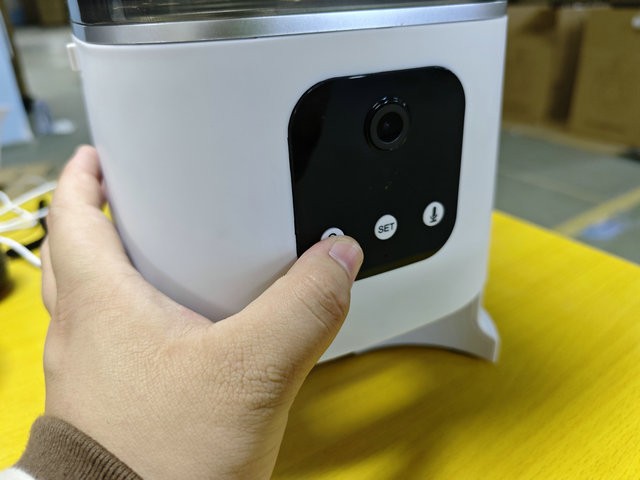In the rapidly evolving world of technology, smartphones have become an integral part of our lives. These devices are not just communication tools but also serve as cameras, entertainment hubs, and productivity aids. Ensuring the quality and reliability of smartphones is paramount, as any defects can lead to user dissatisfaction and potential safety hazards. NBNQC, a leading electronics quality inspection service provider in China, understands the significance of thorough quality control. In this article, we will share a detailed checklist for inspecting the quality of smartphones to guarantee their performance and safety.

Contents
1. Exterior Inspection
The first impression of a smartphone often comes from its external appearance. A thorough exterior inspection is essential to ensure that the device meets quality standards.
1.1. Housing and Build Quality
- Check for any scratches, dents, or blemishes on the phone’s housing.
- Verify that all seams and joints are properly aligned and free from gaps.
- Examine the materials used for the phone’s body (e.g., glass, metal, plastic) for durability and quality.
1.2. Buttons and Controls
- Test all physical buttons (power, volume, home) for responsiveness and click feel.
- Ensure that buttons are securely attached and do not wobble.
- Verify the accuracy and consistency of fingerprint sensors or facial recognition systems.
1.3. Display and Screen
- Inspect the screen for dead pixels, discoloration, or irregularities.
- Test the touchscreen for responsiveness and accuracy across the entire display.
- Check for scratches or cracks on the screen and evaluate the quality of any screen protectors.
1.4. Ports and Connectors
- Test all ports (USB-C, headphone jack, SIM card tray) for proper functionality.
- Ensure that the device can connect to a computer and transfer data via USB.
- Verify that the SIM card tray opens and closes smoothly.
1.5. Cameras and Sensors
- Test all cameras and sensors (front and rear-facing) for image quality and functionality.
- Check the performance of features like autofocus, image stabilization, and night mode.
- Verify that all sensors (proximity, ambient light, gyro) work as intended.
1.6. Speaker and Audio Quality
- Test the loudspeaker for sound quality and clarity at various volume levels.
- Ensure that audio output through headphones or Bluetooth is distortion-free.
- Check the microphone for clear voice recording and noise cancellation.
2. Software Inspection
Smartphone software plays a vital role in the user experience. A comprehensive software inspection helps identify issues and ensures that the device operates smoothly.
2.1. Operating System and Updates
- Check if the smartphone is running the latest version of the operating system (e.g., Android, iOS).
- Verify that the device can receive and install software updates.
- Ensure that the user interface is responsive and free from lag.
2.2. App Functionality
- Test the pre-installed apps for functionality and stability.
- Ensure that the app store (Google Play Store, Apple App Store) can download and update apps without issues.
- Verify that third-party apps can be installed and run without crashing.
2.3. Connectivity
- Test Wi-Fi, Bluetooth, and cellular connectivity for stability and speed.
- Verify that the device can connect to various types of Wi-Fi networks and Bluetooth devices.
- Ensure that mobile data and voice calling work without interruptions.
2.4. Security and Privacy
- Test the effectiveness of security features, including PIN, fingerprint, and facial recognition.
- Ensure that the device can be locked and unlocked securely.
- Verify that the privacy settings allow users to control data sharing and permissions.
2.5. Battery and Power Management
- Test battery life under different usage scenarios.
- Check for abnormal battery drain when the device is idle.
- Verify that the device charges safely and does not overheat during charging.
2.6. Performance
- Run benchmark tests to assess the smartphone’s overall performance.
- Check for overheating or throttling during resource-intensive tasks.
- Ensure that multitasking and app switching are smooth and responsive.
3. Hardware Inspection
The internal components of a smartphone are critical to its functionality and durability. A detailed hardware inspection helps identify potential issues.
3.1. Battery
- Verify the battery’s capacity and health.
- Check for any bulging or deformation of the battery.
- Ensure that the battery is securely and safely attached to the device.
3.2. Internal Components
- Open the device (if possible) to inspect internal components.
- Check for loose or disconnected cables and connectors.
- Verify the integrity of the mainboard, processor, and memory modules.
3.3. Cooling System
- Inspect the cooling system (heat pipes, thermal paste) for proper installation.
- Test the device under load to ensure that it does not overheat.
- Verify that the device does not produce unusual noises during operation.
3.4. Sensors and Hardware Features
- Ensure that all sensors (accelerometer, gyroscope, compass) function correctly.
- Test any additional hardware features, such as IR blasters or NFC, for functionality.
- Verify the accuracy of GPS and location-based services.
3.5. Audio Components
- Test the quality of audio components, including the earpiece and microphones.
- Ensure that the device supports stereo audio when applicable.
- Verify that the device can record high-quality audio and video.
4. Network and Connectivity Testing
Smartphones are primarily communication devices, so thorough testing of network and connectivity features is crucial.
4.1. Cellular Network
- Test the device’s ability to connect to different cellular networks (2G, 3G, 4G, 5G).
- Check for signal strength and call quality in various locations.
- Ensure that data speeds meet or exceed specified standards.
4.2. Wi-Fi and Hotspot
- Verify that the smartphone can connect to Wi-Fi networks securely.
- Test the device’s ability to act as a Wi-Fi hotspot.
- Ensure that Wi-Fi speeds and range are satisfactory.
4.3. Bluetooth and Near-Field Communication (NFC)
- Test Bluetooth connectivity with various devices, such as headphones and speakers.
- Ensure that NFC functions correctly for contactless payments and data sharing.
- Verify the accuracy of GPS and location services for navigation and mapping.
- Test the device’s ability to acquire and maintain a GPS lock.
- Ensure that location-based apps function correctly.
5. Performance and Stress Testing
To assess the smartphone’s performance under various conditions, it is essential to conduct rigorous performance and stress tests.
5.1. Speed and Responsiveness
- Run synthetic benchmark tests to measure CPU and GPU performance.
- Test app launch times and multitasking performance.
- Verify that the user interface remains responsive even during heavy usage.
5.2. Gaming Performance
- Test the smartphone’s gaming performance by running demanding 3D games.
- Monitor frame rates and graphics quality during gameplay.
- Check for overheating or performance throttling during extended gaming sessions.
5.3. Battery Life
- Conduct battery life tests under different usage scenarios (e.g., web browsing, video playback, gaming).
- Record screen-on and screen-off battery drain rates.
- Verify that the battery life aligns with manufacturer claims.
5.4. Temperature and Thermal Management
- Measure the device’s temperature during intensive tasks.
- Verify that the device does not become uncomfortably hot during normal use.
- Check for thermal throttling that may affect performance.
6. Quality Assurance and Certification
For smartphones to be sold in various markets, they often need to meet specific quality standards and certifications. Ensure that the device complies with all relevant regulations and standards.
6.1. Regulatory Compliance
- Verify that the smartphone complies with regional regulatory requirements (e.g., FCC, CE).
- Check for proper labeling of regulatory information on the device.
6.2. Quality Certification
- Ensure that the smartphone meets industry quality standards (e.g., ISO 9001).
- Verify the presence of quality certificates issued by reputable organizations.
6.3. Environmental Compliance
- Check for compliance with environmental regulations (e.g., RoHS, WEEE).
- Ensure that the device is labeled with relevant environmental certifications.
Conclusion
In a competitive market where smartphones continually push the boundaries of technology, quality control is of utmost importance. NBNQC, as a leading provider of quality inspection services in China, understands the significance of ensuring that smartphones meet rigorous quality standards. The detailed checklist provided in this article covers all aspects of smartphone quality, from external appearance to hardware and software performance. By adhering to such a checklist, manufacturers can guarantee that their smartphones deliver an exceptional user experience while meeting all necessary regulations and certifications. Ultimately, this attention to quality helps build trust with consumers and ensures the long-term success of smartphone products in the market.






